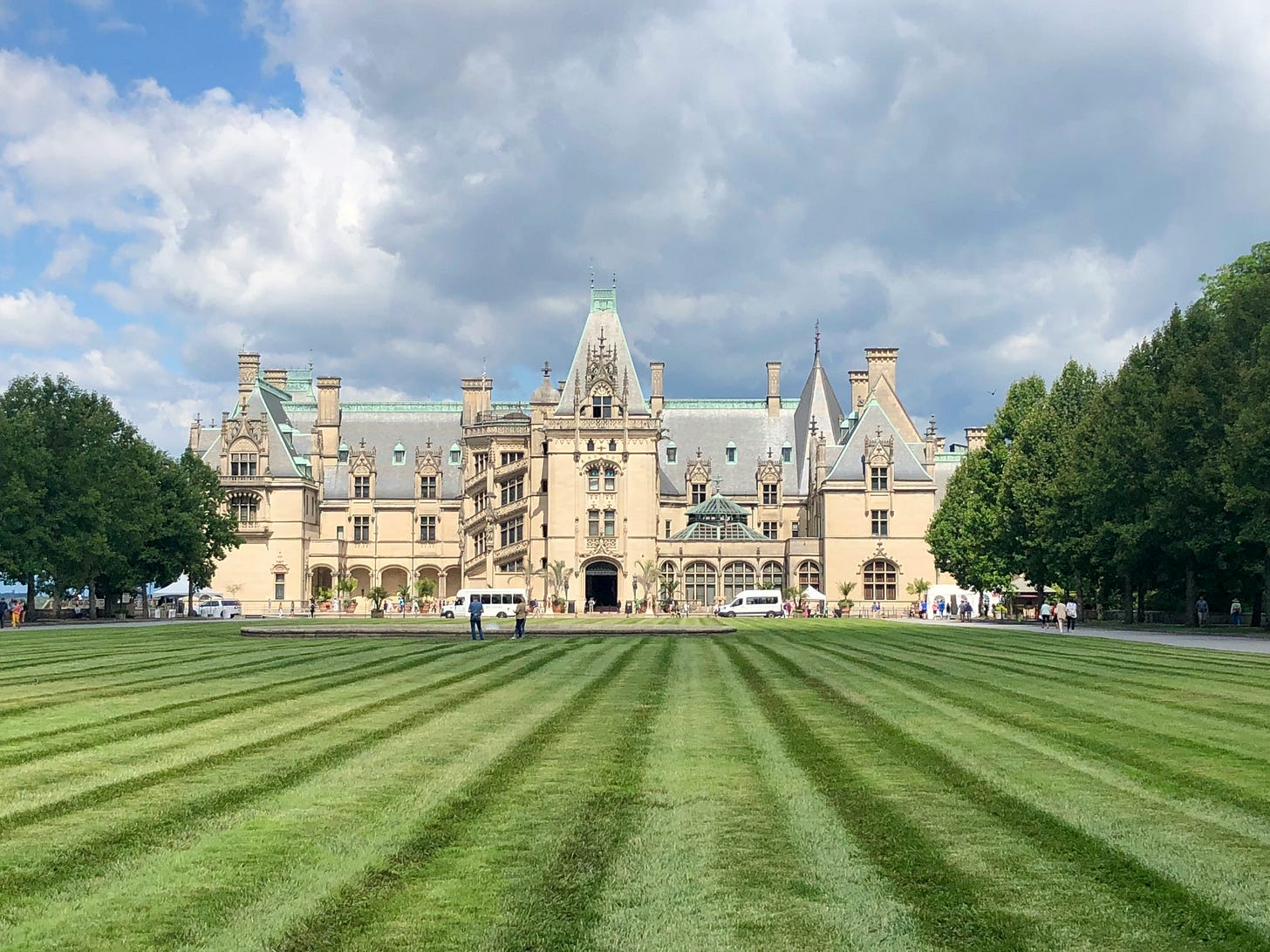When I drive up the Approach Road to Biltmore House, cars behind me get annoyed. And I don't care!
I meander slowly. I stop frequently. I get out and peer at the stonework. I take pictures! I imagine being a guest of George Vanderbilt's, winding my way up the three-mile road in a horse-drawn carriage. I notice the tiny meandering stream, and the brick work.
Ah, the stone benches! These are delightful places for Mr. Vanderbilt's guests to stop and admire the landscape textures, the shadows, and the ponds and creek, along the way up to the 250-room mansion.
Every time I drive the Approach Road, I look with new eyes and notice new things. Even after all these years.
From Nothing
When Frederick Law Olmsted, the landscape architect for Biltmore Estate in Asheville, North Carolina, began the project, the land was over-forested and barren. Mr. Olmsted took a land with nothing and filled it with evergreens, mountain laurel, yews, oak, and more. He planted thousands of native trees, shrubs, and evergreens, creating a sense of unfolding sense of discovery as Mr. Vanderbilt’s visitors traveled toward the house. His plantings helped screen views, control erosion, and shaped a dramatic, picturesque arrival experience.
Even in the Winter
Mr. Olmsted even considered the Approach Road's aesthetics during the winter. He added plants that would provide color and texture during the cold months. And he even considered the winter views that would occur from the trees without leaves along this winding road.
A Bit More
It’s intentionally meandering – The road twists and turns on purpose; Olmsted wanted visitors to feel like they were discovering a remote mountain retreat rather than arriving at a grand house immediately.
Naturalistic landscaping – The plantings along the Approach Road were arranged to look wild and organic, using native plants and trees to highlight the natural beauty of the Blue Ridge Mountains.
Frederick Law Olmsted is considered the father of American landscape architecture—he co-designed New York City's Central Park in the 1850s, which became a model for urban parks across the U.S.
Mr. Olmsted believed in the power of nature to improve public health and democracy, often designing green spaces to be accessible to all, regardless of social class, for rest, recreation, and civic unity.
It was built to heighten drama – The house is not visible until the very end of the drive, creating a sense of surprise and awe when it finally comes into view.
Have you traveled up the Approach Road at Biltmore Estate? I hope you drove slowly, even if it annoyed the cars behind you, so you could recognize and absorb the genius of Frederick Law Olmsted.







I have traveled up the approach road many times but never experienced the view quite like yours! My next journey up that road will definitely be a much more educational experience thanks to your knowledge and detailed description of the road and grounds in general. Thank you Susan!